Rock gardens transform ordinary outdoor spaces into stunning landscapes that combine natural beauty with low-maintenance appeal. These versatile garden designs work perfectly for slopes, flat areas, or challenging terrain where traditional gardening struggles. From alpine-inspired mountain retreats to modern zen sanctuaries, rock gardens offer endless creative possibilities using stones, boulders, and drought-tolerant plants. Whether you prefer colorful succulent displays, traditional Japanese aesthetics, or contemporary water features, rock gardens provide year-round interest with minimal upkeep requirements.
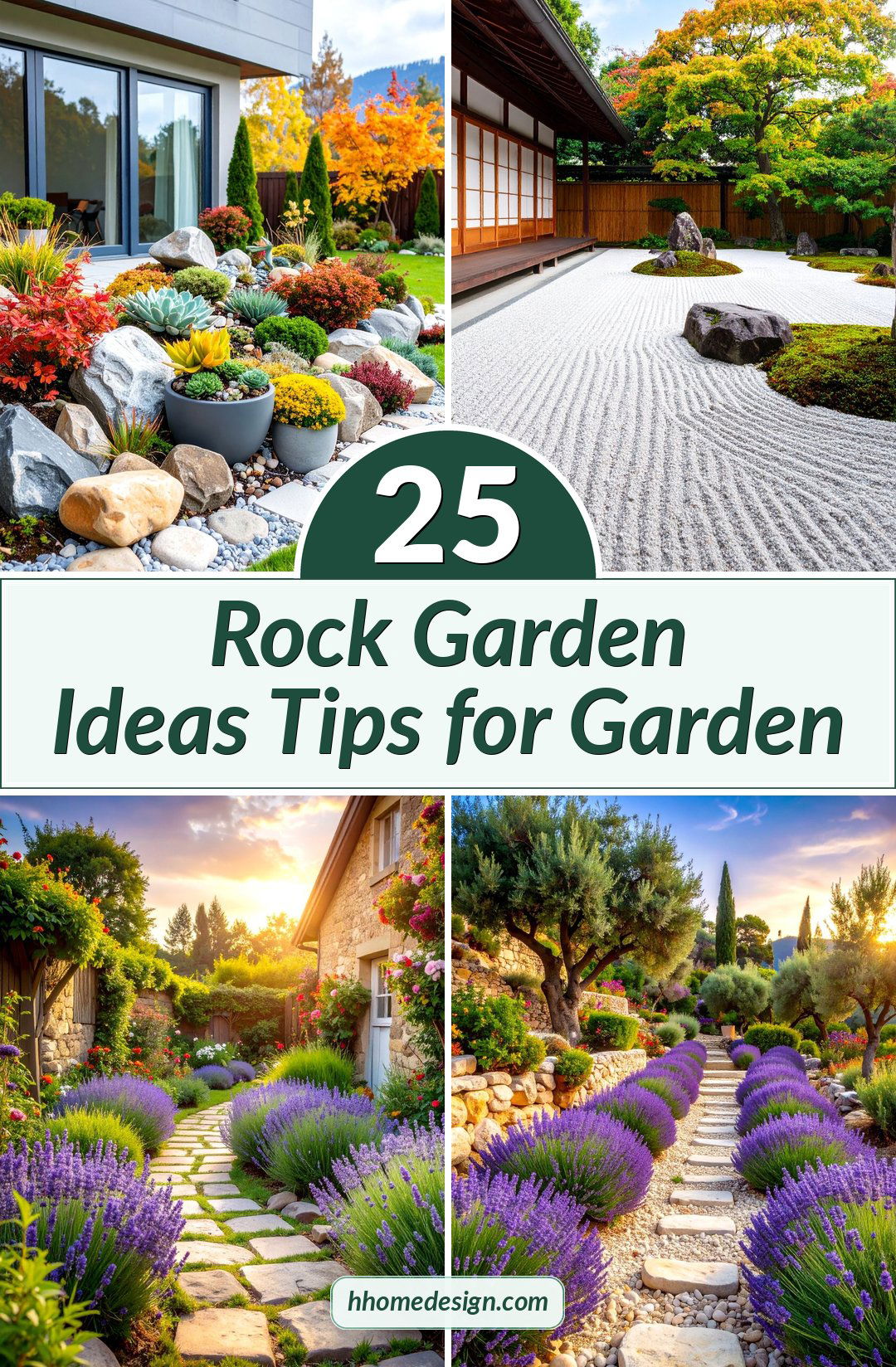
1. Alpine Rock Garden with Mountain Plants

Alpine rock gardens recreate high-altitude mountain environments using carefully arranged stones and cold-hardy plants. This design features natural limestone or granite boulders positioned at different elevations to mimic mountainous terrain. Traditional alpine plants like saxifrage, aubrieta, and creeping phlox cascade between rock crevices, creating colorful displays throughout spring and summer. Dwarf conifers such as mugo pine and blue spruce add year-round structure, while sedums provide drought tolerance. The sharp-draining soil mixture combines equal parts loam, horticultural grit, and leaf mold. This authentic mountain-style garden thrives in full sun locations with excellent drainage, offering low-maintenance beauty that captures the essence of alpine meadows in your backyard landscape.
2. Japanese Zen Rock Garden with Raked Gravel

Japanese zen rock gardens, known as karesansui, create minimalist dry landscapes for meditation and contemplation. This design uses white crushed granite or sand as the primary element, carefully raked into flowing patterns that represent water movement. Large weathered stones are placed asymmetrically in groups of three or five, symbolizing mountains or islands emerging from the sea. A simple bamboo fence or low stone wall encloses the space, creating privacy and separation from surrounding areas. Moss occasionally accents the stone bases, while a few pruned evergreen shrubs provide minimal vegetation. Regular raking becomes a meditative practice, maintaining the pristine patterns while fostering mindfulness and tranquility in this sacred garden space.
3. Succulent Rock Garden with Desert Plants
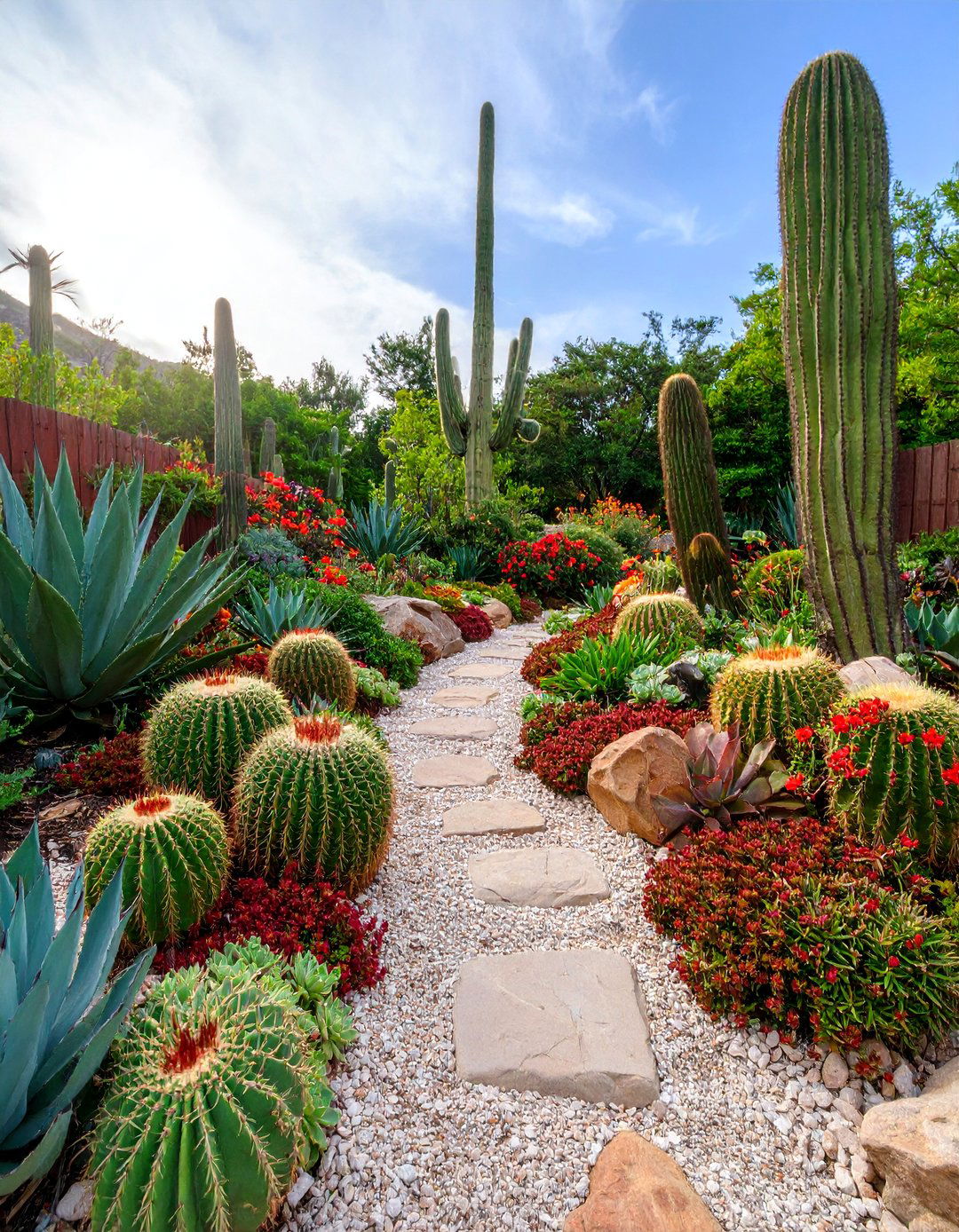
Succulent rock gardens combine drought-tolerant plants with natural stone for stunning low-water landscapes. This design features colorful echeveria, sedum, and sempervivum arranged among decomposed granite pathways and boulder clusters. Agaves and barrel cacti serve as dramatic focal points, while smaller succulents like hens-and-chicks fill rock crevices and create living tapestries. The soil mixture emphasizes drainage with added pumice and coarse sand to prevent root rot. Rock mulch in matching tones helps retain heat around plants while suppressing weeds. This water-wise garden thrives in hot, sunny locations and provides year-round color through varied foliage textures and occasional blooms. Perfect for modern landscapes prioritizing sustainability and minimal maintenance requirements.
4. Terraced Rock Garden with Waterfall Feature

Terraced rock gardens utilize sloped terrain to create multiple planting levels connected by cascading water features. Large fieldstone or stacked slate forms natural-looking retaining walls that hold terraced planting areas at different elevations. A recirculating waterfall system moves water from the highest terrace down through multiple levels, creating soothing sounds and visual movement. Each terrace hosts different plant communities, from moisture-loving ferns near water areas to drought-tolerant rock plants on upper levels. Native ornamental grasses, astilbe, and coral bells thrive in this varied environment. The combination of flowing water, natural stone, and diverse plantings creates a dynamic landscape feature that addresses challenging slopes while providing year-round garden interest and habitat diversity.
5. Contemporary Rock Garden with Geometric Design

Contemporary rock gardens feature clean lines and geometric patterns using modern materials and architectural plants. This design incorporates rectangular limestone blocks, steel edging, and precise gravel patterns to create structured outdoor spaces. Ornamental grasses like blue fescue and fountain grass provide softening elements, while sculptural plants such as yucca or agave add dramatic focal points. The color palette remains neutral with grey stone, white gravel, and silver-green foliage creating sophisticated harmony. LED lighting integrated into stone features extends evening enjoyment. This modern approach to rock gardening suits contemporary architecture and appeals to homeowners seeking low-maintenance landscapes with strong design presence. The geometric layout requires minimal plant maintenance while delivering maximum visual impact throughout all seasons.
6. Cottage-Style Rock Garden with Flowering Perennials

Cottage-style rock gardens blend informal charm with natural stone features and abundant flowering plants. This romantic design uses weathered fieldstone and vintage brick to create meandering pathways and informal planting beds. Traditional cottage plants like lavender, catmint, and hardy geraniums spill over stone edges, while climbing roses scramble through rustic stone walls. Herbs such as thyme and oregano grow between stepping stones, releasing fragrance when walked upon. The planting scheme emphasizes pastel colors and cottage garden favorites including pinks, campanula, and rock cress. This design creates an enchanting, old-world atmosphere that combines practical herb growing with ornamental beauty. The informal layout encourages wandering and discovery while maintaining the relaxed, romantic appeal of traditional English cottage gardens.
7. Dry Creek Bed Rock Garden

Dry creek bed rock gardens simulate natural waterways using rounded river rocks and drought-tolerant plants. This design creates the illusion of a seasonal stream bed using various sizes of smooth stones arranged in meandering patterns. Larger boulders anchor the design at curves and wider areas, while smaller pebbles fill the channel center. Native ornamental grasses, sedges, and wildflowers line the banks, creating natural transitions to surrounding landscape. Bridge elements or stepping stones provide crossing points and add structural interest. This water-wise alternative to actual streams requires no irrigation system while providing effective drainage during heavy rains. The design works particularly well in areas with natural slopes, creating visual flow and movement throughout the garden while supporting local wildlife habitat.
8. Mediterranean Rock Garden with Aromatic Herbs
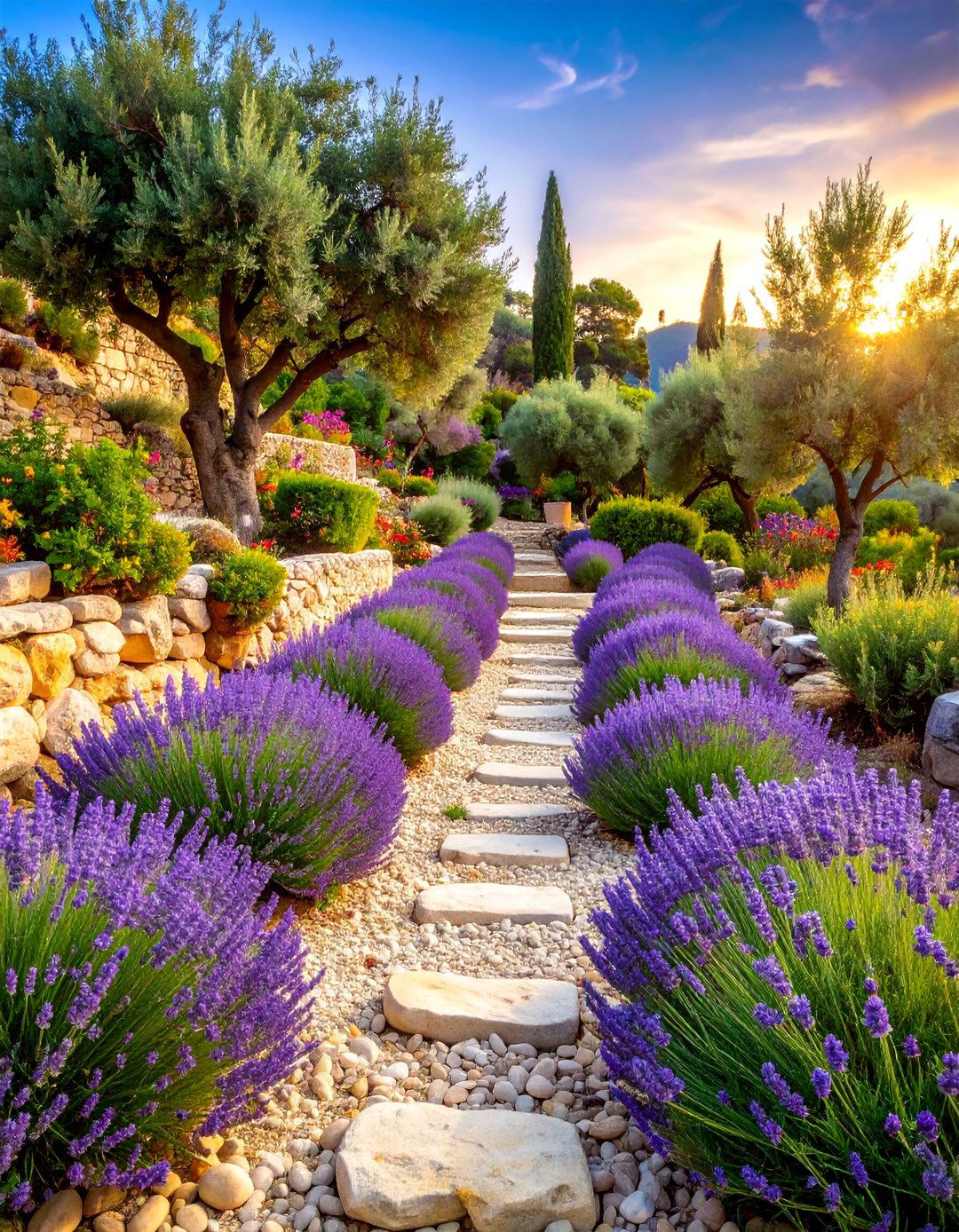
Mediterranean rock gardens capture the essence of coastal hillsides using sun-loving herbs and natural stone. This design features terraced plantings of lavender, rosemary, and thyme arranged among limestone or sandstone rocks that reflect Mediterranean landscapes. Olive trees or ornamental citrus provide structural elements, while colorful perennials like santolina and salvia add seasonal interest. Gravel mulch in warm tones complements the stone selection and helps plants endure hot, dry conditions. This fragrant garden design serves dual purposes, providing culinary herbs for cooking while creating beautiful landscape features. The silver-grey foliage palette remains attractive year-round, while purple, blue, and yellow flowers provide seasonal color. This low-maintenance approach thrives in sunny, well-drained locations with minimal water requirements once established.
9. Shade Rock Garden with Woodland Plants

Shade rock gardens utilize natural or artificial stone features to create woodland environments for shade-loving plants. This design incorporates moss-covered boulders, natural fieldstone, and organic shapes that mimic forest floor conditions. Shade perennials like hostas, heuchera, and astilbe thrive in the cool, moist conditions created by stone thermal mass. Ferns, wild ginger, and woodland flowers such as trillium create naturalistic plantings that change seasonally. The stone selection emphasizes darker colors and varied textures that complement shade plant foliage. This garden type works well under mature trees or in naturally shaded areas where traditional sun-loving rock plants struggle. Regular leaf mold addition enriches the soil while maintaining the woodland character essential for authentic forest garden aesthetics.
10. Vertical Rock Garden Wall

Vertical rock garden walls maximize planting space while creating dramatic living sculptures in small areas. This design uses dry-stacked stone construction with planting pockets between courses for alpine and succulent plants. Retaining wall systems support the structure while providing excellent drainage essential for rock plant survival. Small perennials like aubrieta, rock cress, and creeping phlox cascade down the wall faces, creating colorful vertical displays. The construction allows gravity-fed irrigation systems that deliver water efficiently to all planting levels. This space-saving approach works well for steep slopes, property boundaries, or as garden focal points. The vertical growing environment mimics natural cliff habitats while providing practical erosion control. Multiple wall sections can create terraced gardens that maximize both growing space and visual impact in compact landscapes.
11. Rock Garden with Native Wildflowers
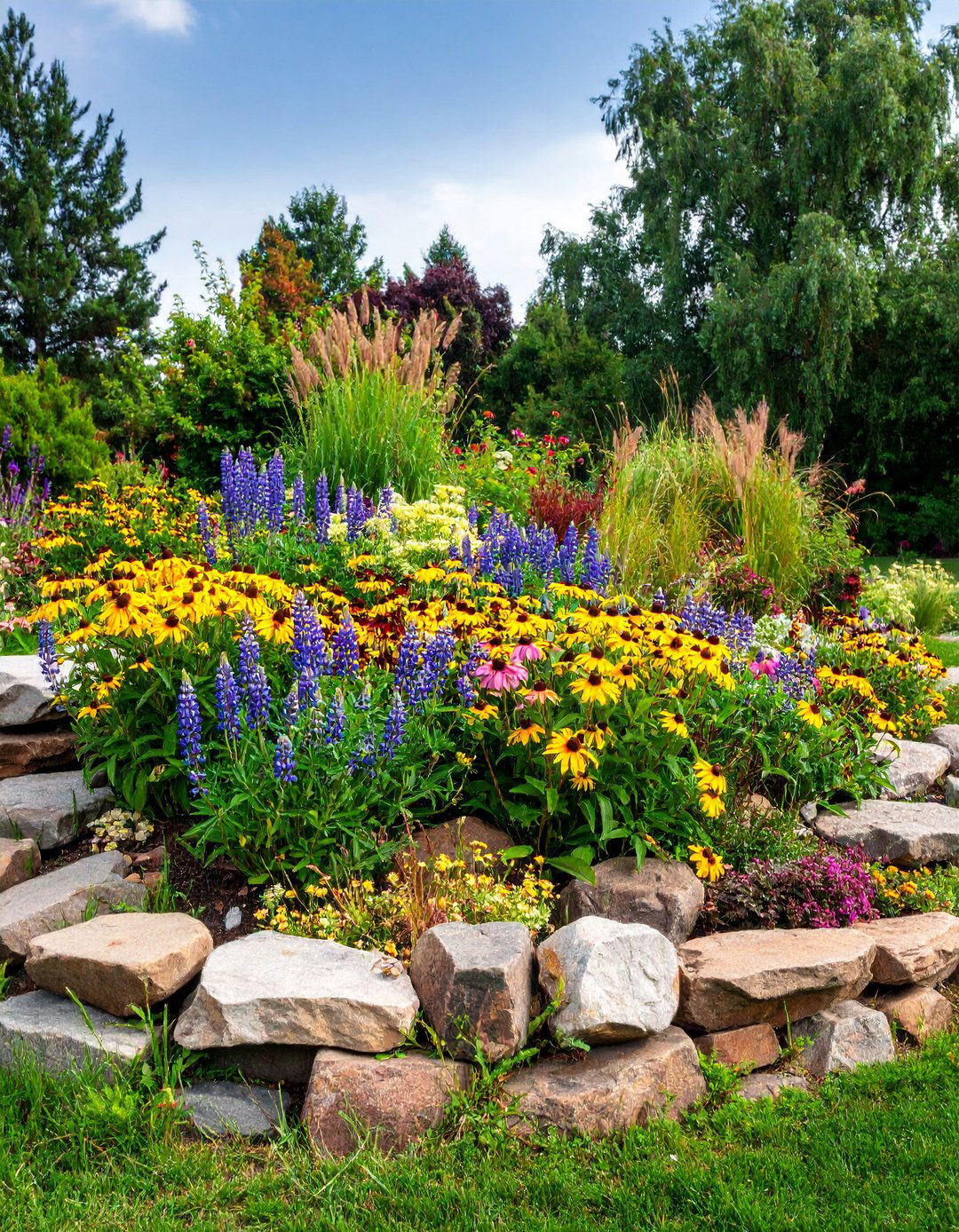
Native wildflower rock gardens celebrate local plant communities while providing habitat for indigenous wildlife. This design incorporates regional stone types with native flowering plants that naturally occur in rocky habitats. Local wildflowers such as black-eyed Susan, purple coneflower, and regional lupines create seasonal color displays that attract butterflies and beneficial insects. Native ornamental grasses provide structure and winter interest while supporting bird populations. The soil preparation mimics natural conditions found in local rocky areas, ensuring plant success without artificial amendments. This ecological approach requires minimal maintenance once established, as plants are adapted to local climate and soil conditions. The design supports local ecosystems while creating beautiful landscapes that change naturally with seasons and weather patterns, providing authentic regional character.
12. Miniature Rock Garden for Small Spaces
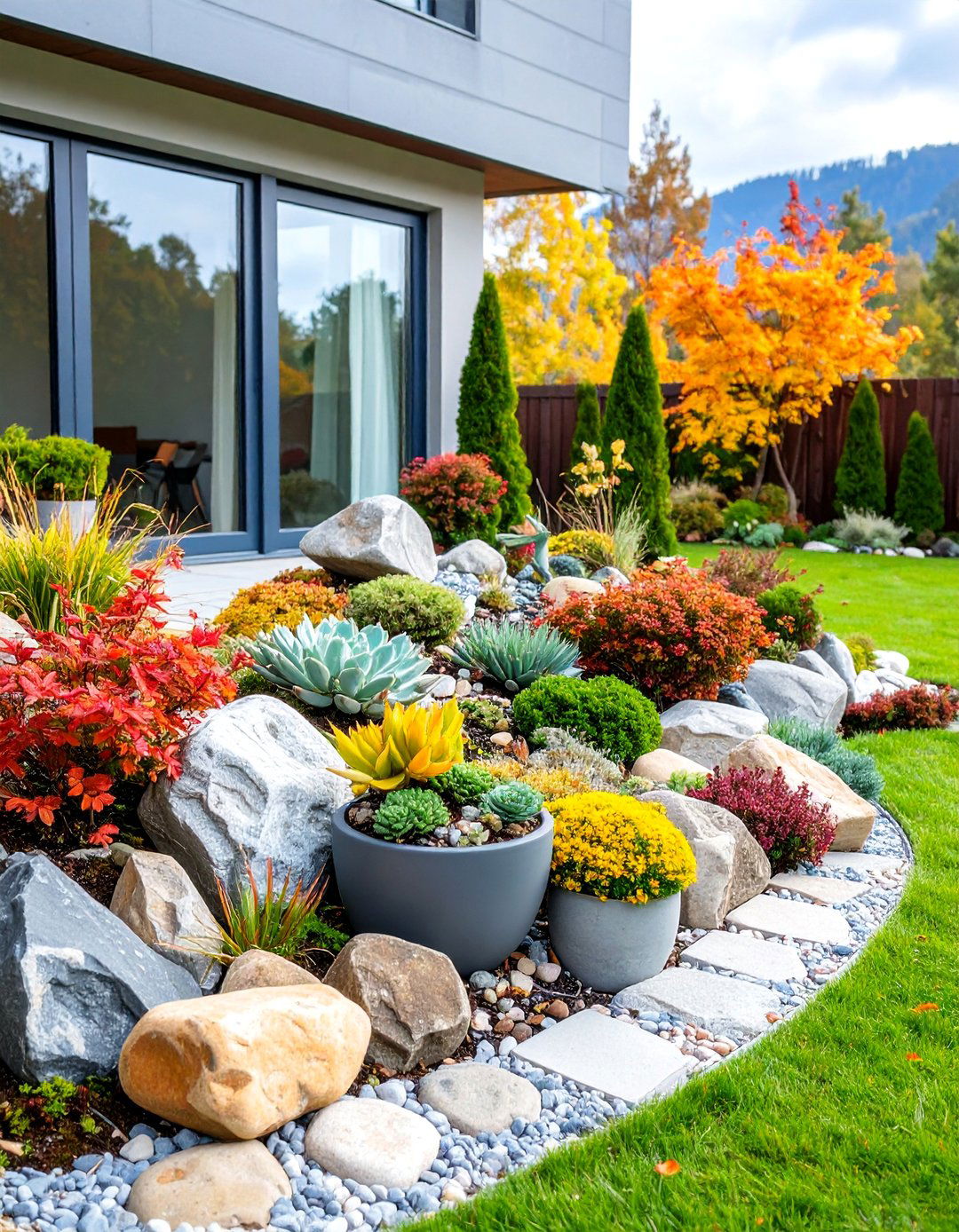
Miniature rock gardens bring alpine charm to small patios, balconies, or compact yard areas using scaled-down elements. This design utilizes container gardening principles with specially designed planters that accommodate proper drainage requirements for rock plants. Small boulders, decorative stones, and miniature plants create proportional landscapes within limited spaces. Dwarf conifers, tiny succulents, and small alpine perennials maintain appropriate scale while providing diverse textures and colors. Portable containers allow seasonal rearrangement and winter protection in harsh climates. This approach makes rock gardening accessible to apartment dwellers and homeowners with minimal outdoor space. The concentrated design requires careful plant selection to ensure compatibility within confined root zones. Regular maintenance keeps plants healthy and attractive while providing intimate garden experiences in urban environments.
13. Rock Garden with Ornamental Grasses
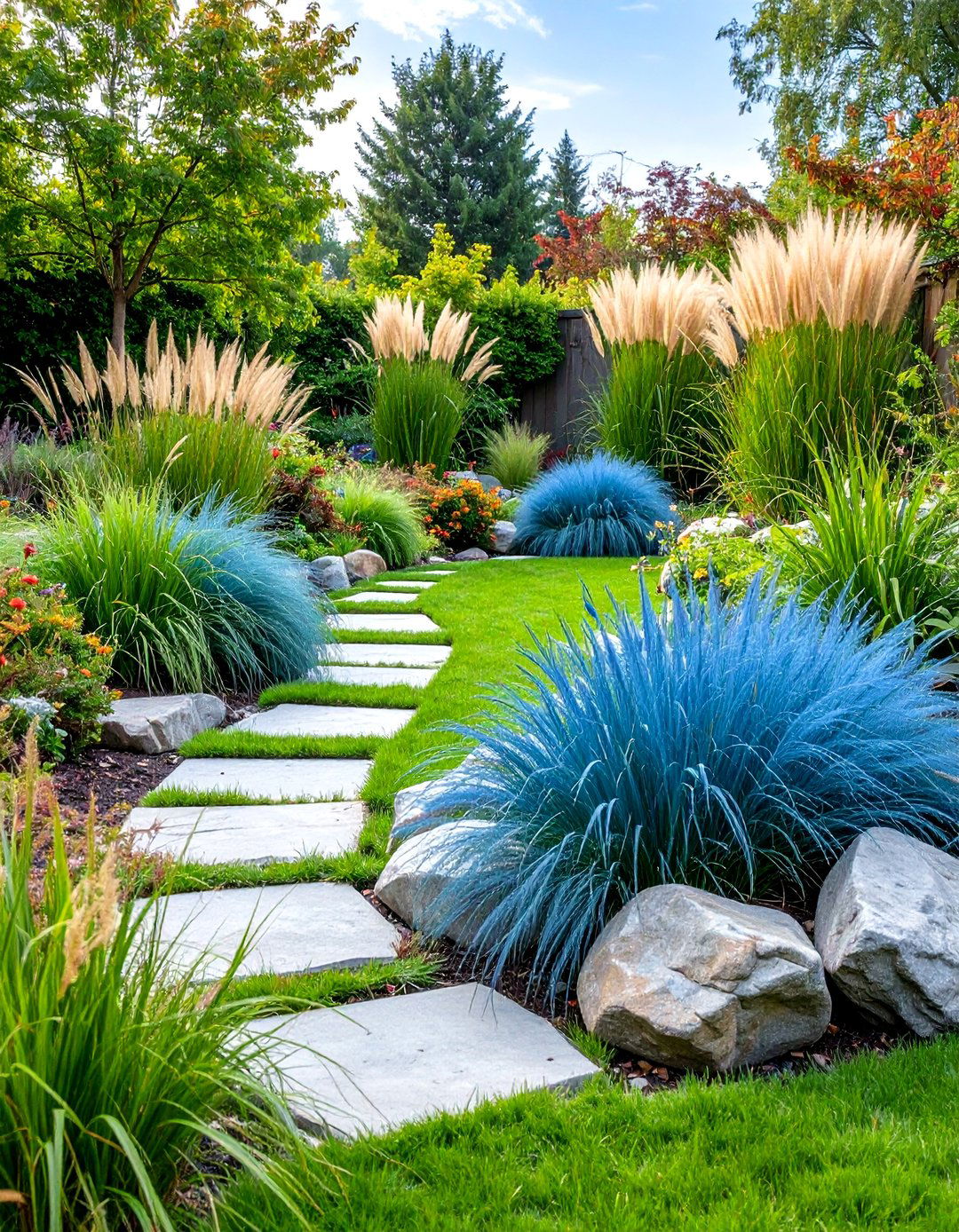
Ornamental grass rock gardens emphasize texture and movement using diverse grass species among stone features. This design combines architectural grasses like fountain grass, blue fescue, and feather reed grass with natural boulders and decorative stones. The grasses provide four-season interest through varied foliage colors, seed heads, and winter forms that remain attractive through cold months. Stone placement creates windbreaks and microclimates that benefit different grass species while adding structural elements to the soft grass textures. This low-maintenance approach requires minimal watering once established, as most ornamental grasses tolerate drought conditions. The design works well in contemporary or naturalistic settings, providing privacy screening while creating habitat for birds and beneficial insects. Seasonal cutting maintains plant health while allowing for natural seed dispersal and wildlife support.
14. Rock Garden Pond with Aquatic Plants
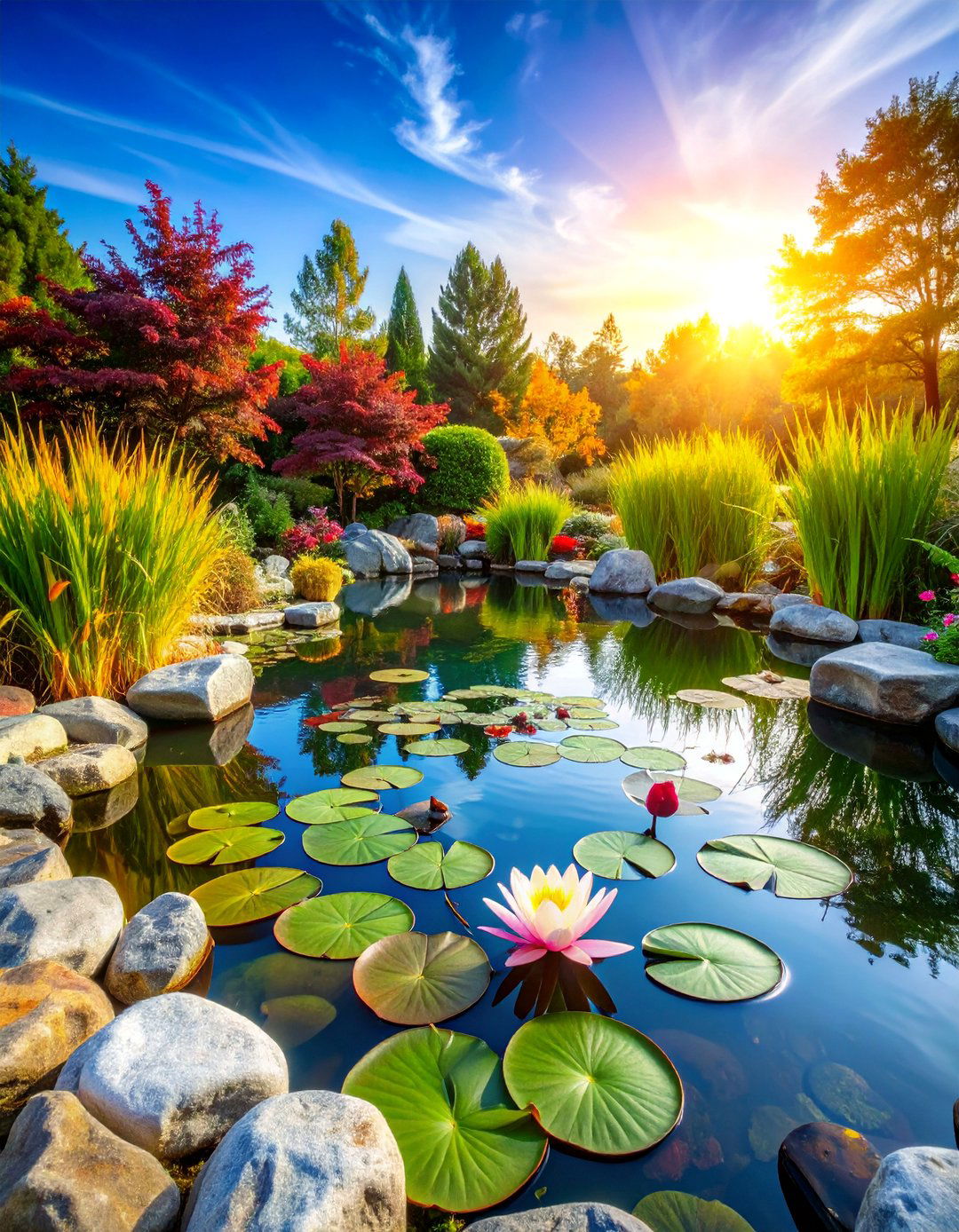
Rock garden ponds integrate water features with stone landscapes to create diverse habitat conditions. This design uses natural stone edges and underwater rock features to support both aquatic and terrestrial plant communities. Water lilies, cattails, and marginal plants thrive in pond conditions, while surrounding rock areas host drought-tolerant perennials and alpines. The water feature provides thermal mass that moderates local temperatures, creating favorable microclimates for plant diversity. Fish populations control mosquitoes while adding movement and interest to the water surface. Recirculating pumps maintain water quality and provide gentle water sounds that enhance garden ambiance. This complex ecosystem requires balanced management but rewards gardeners with exceptional biodiversity and year-round beauty. The combination of water, stone, and plants creates habitat that supports amphibians, birds, and beneficial insects.
15. Desert Rock Garden with Cacti
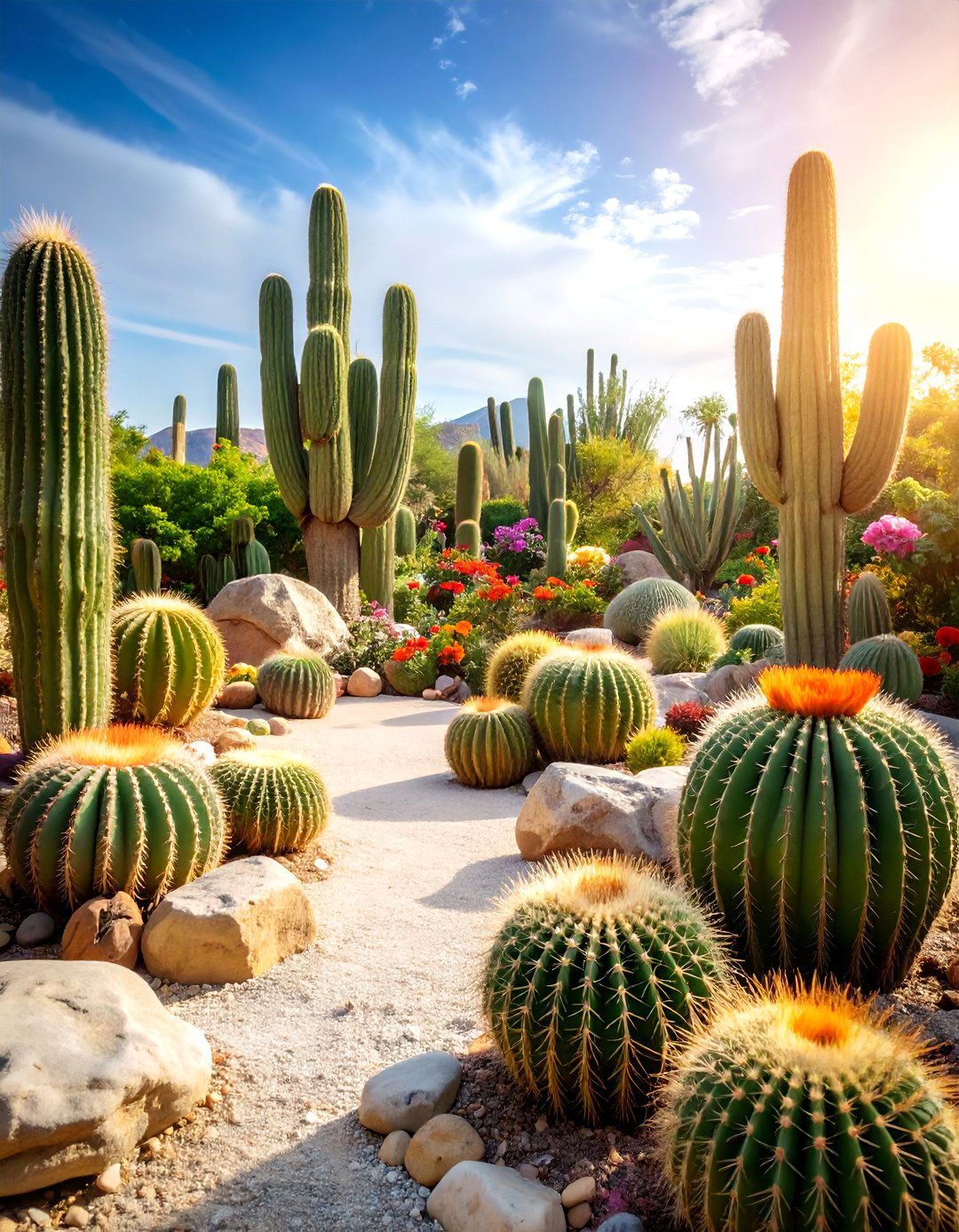
Desert rock gardens recreate arid landscapes using heat-loving cacti and succulent plants with appropriate stone selections. This design features dramatic specimens like barrel cacti, prickly pear, and columnar cacti arranged among decomposed granite and desert-colored boulders. The soil mixture emphasizes drainage with added sand and gravel to prevent moisture retention that damages desert plants. Decorative stones in warm tones complement plant colors while providing thermal mass that moderates temperature extremes. This water-wise garden thrives in hot, sunny locations with minimal irrigation requirements. Careful plant spacing allows for natural growth patterns while preventing overcrowding. The design provides year-round structure through sculptural plant forms and occasional dramatic blooms. This approach works well in southwestern climates or as specimen gardens in greenhouse environments where desert plants can be appreciated.
16. Rock Garden Steps and Pathways

Rock garden steps and pathways integrate functional circulation with planted landscape features throughout sloped terrain. This design uses natural stone steps and meandering pathways that connect different garden levels while providing planting opportunities along edges and in crevices. Low-growing plants like creeping thyme, sedums, and moss grow between stepping stones, creating living pathways that release fragrance when walked upon. Handrails of natural wood or stone provide safety on steep sections while maintaining rustic character. The pathway design follows natural contours to minimize erosion while creating interesting views and stopping points throughout the garden journey. This functional approach combines practical access with beautiful landscape features that evolve seasonally. Regular maintenance keeps pathways safe while allowing plants to naturalize in appropriate locations, creating authentic integration between hardscape and planted areas.
17. Rock Garden with Seasonal Bulbs
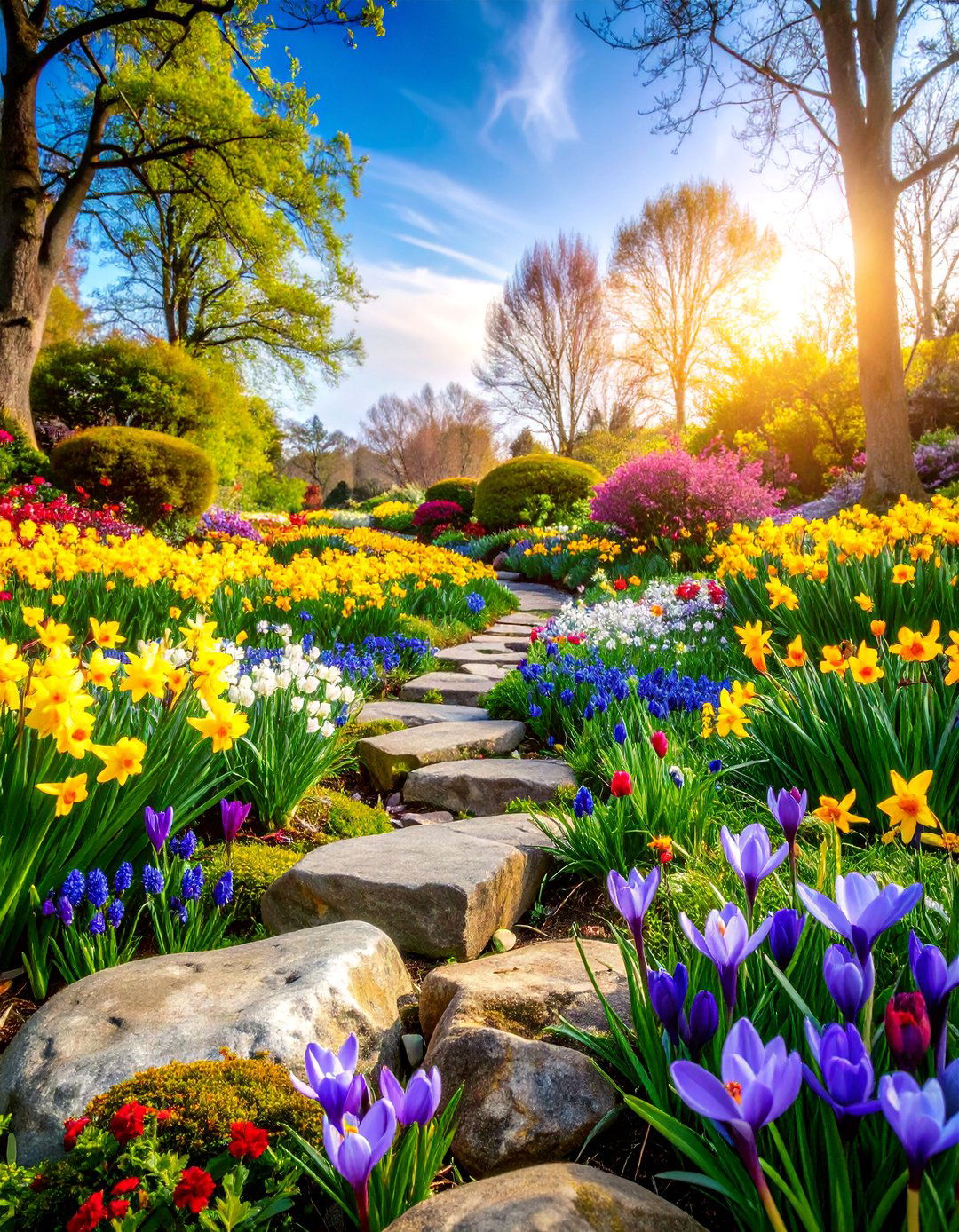
Seasonal bulb rock gardens provide spring and fall color displays using naturalized plantings among stone features. This design incorporates early spring bulbs like crocuses, miniature daffodils, and species tulips that emerge between rocks and provide color before other plants leaf out. Fall-blooming bulbs such as autumn crocuses and hardy cyclamen extend the growing season into late autumn. The well-drained conditions created by rock garden construction suit bulb requirements perfectly, preventing rot while providing necessary winter chill. Companion plantings of sedums and alpine perennials fill summer gaps while allowing bulb foliage to die back naturally. This design provides seasonal surprise and delight through naturalized bulb colonies that increase over time. The combination of permanent plant structure with seasonal bulb displays creates dynamic landscapes that change dramatically throughout the growing year.
18. Rock Garden Border Design
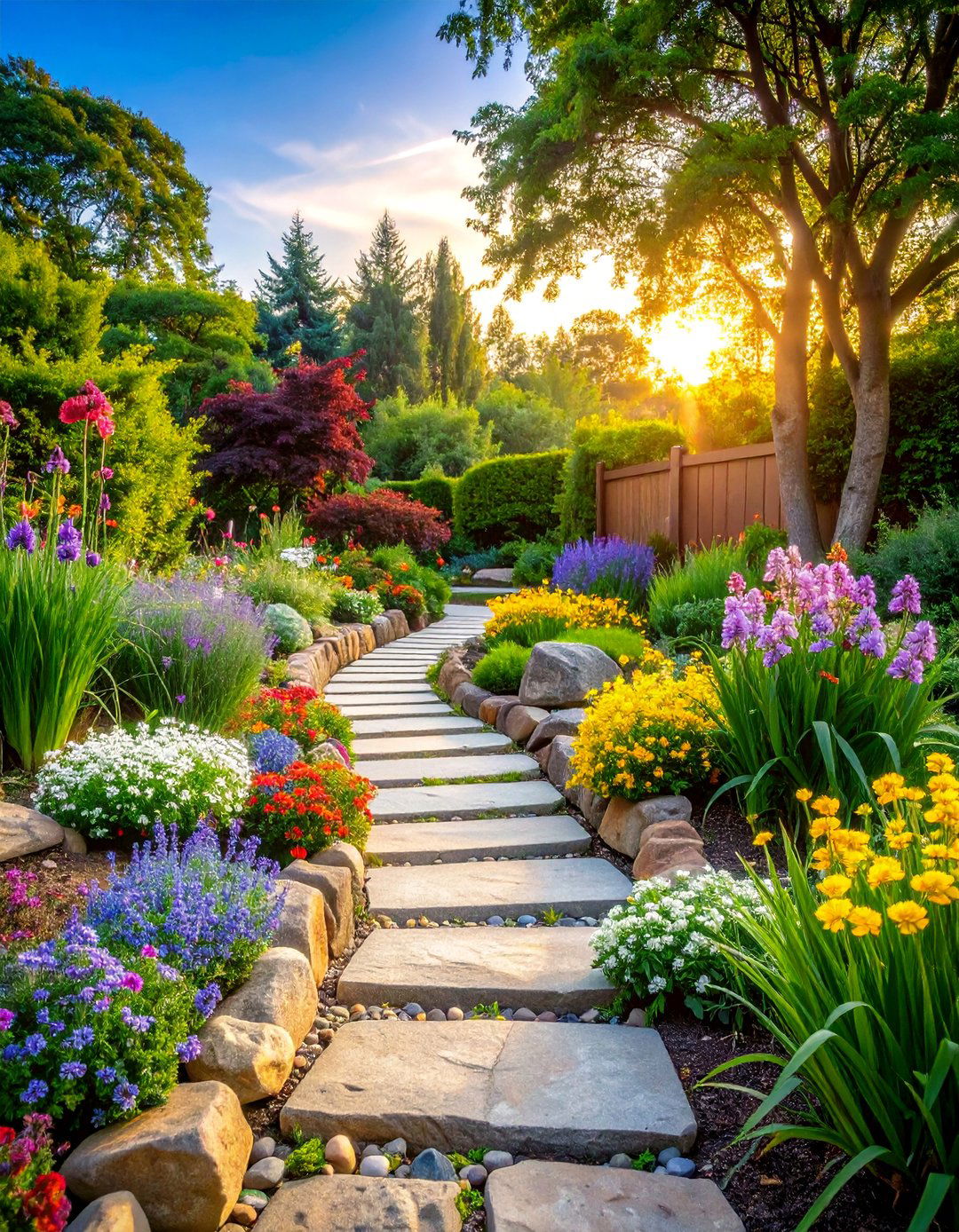
Rock garden borders create transitional zones between lawn areas and other landscape features using linear stone and plant arrangements. This design uses natural fieldstone or decorative rock to define garden edges while providing growing conditions for specialized plants. The border design allows gradual transitions from high-maintenance lawn areas to low-maintenance rock plant communities. Edging plants like rock cress, candytuft, and dwarf iris create colorful displays that define spaces while providing wildlife habitat. The linear format works well along driveways, property lines, or as foundation plantings that require minimal care. This approach introduces rock gardening concepts without major landscape reconstruction. The border design can be expanded over time as maintenance requirements decrease and plant appreciation increases. Strategic plant selection ensures year-round interest while providing practical separation between different landscape zones.
19. Modern Rock Garden with Steel Accents

Modern rock garden designs incorporate contemporary materials like steel edging, concrete planters, and geometric stone arrangements with architectural plants. This design emphasizes clean lines and minimal color palettes using grey stone, steel accents, and structured plant selections. Ornamental grasses, architectural succulents, and specimen trees provide sculptural elements that complement modern construction materials. LED lighting integrated into steel features extends evening enjoyment while highlighting plant and stone textures. The geometric layout requires precise installation but minimal ongoing maintenance, appealing to homeowners seeking sophisticated landscape features. This contemporary approach works well with modern architecture and urban environments where traditional rock gardens might appear out of place. The design emphasizes sustainability through drought-tolerant plant selections and efficient irrigation systems that support modern environmental consciousness while providing year-round landscape interest.
20. Rock Garden with Butterfly Plants

Butterfly rock gardens combine stone features with nectar-rich flowering plants that attract and support butterfly populations. This design uses native perennials like purple coneflower, black-eyed Susan, and bee balm arranged among natural boulders that provide basking spots for butterflies. Host plants such as native milkweeds support butterfly life cycles while adding ornamental value to the garden design. The stone features create windbreaks and thermal mass that moderate temperatures, extending butterfly activity periods. Shallow water features or moist soil areas provide necessary minerals through butterfly puddling behavior. This ecological approach supports local butterfly populations while creating beautiful seasonal displays of flowers and winged visitors. The design requires minimal maintenance once established, as native plants adapt to local conditions while providing consistent nectar sources throughout the butterfly season. Educational opportunities abound as gardens observe complete butterfly life cycles within their landscape.
21. Rock Garden with Evening Lighting

Evening-lit rock gardens extend garden enjoyment into nighttime hours using strategic lighting that highlights stone textures and plant forms. This design incorporates low-voltage LED systems that illuminate key garden features without overwhelming natural darkness. Uplighting dramatizes specimen plants and boulder features, while path lighting ensures safe navigation through garden areas. Solar-powered options provide sustainable lighting solutions that require minimal electrical installation. The lighting design emphasizes subtle illumination that enhances natural beauty rather than competing with daylight aesthetics. Programmable systems allow seasonal adjustments and energy conservation while providing security benefits. This enhancement transforms rock gardens into evening entertainment spaces that showcase different aspects of garden beauty after dark. The interplay of light and shadow creates dramatic effects that change throughout the evening as light angles shift and plant shadows move across illuminated stone surfaces.
22. Rock Garden with Seasonal Color

Seasonal color rock gardens provide year-round interest through carefully planned plant successions that ensure continuous blooms and foliage changes. This design combines early spring bulbs, summer perennials, and fall-blooming plants with evergreen structure plants that maintain winter appeal. Spring features might include rock cress and aubrieta, followed by summer sedums and ornamental grasses, concluding with fall asters and colorful foliage plants. The stone selection complements seasonal plant colors while providing permanent structure that unifies changing displays. This approach requires more plant knowledge and maintenance than single-season gardens but rewards gardeners with continuous interest and surprise. Seasonal planning ensures that something is always in bloom or displaying attractive foliage, making the garden a focal point throughout the entire growing year. The design teaches gardeners about plant phenology while providing beautiful landscape features.
23. Rock Garden Rain Collection System
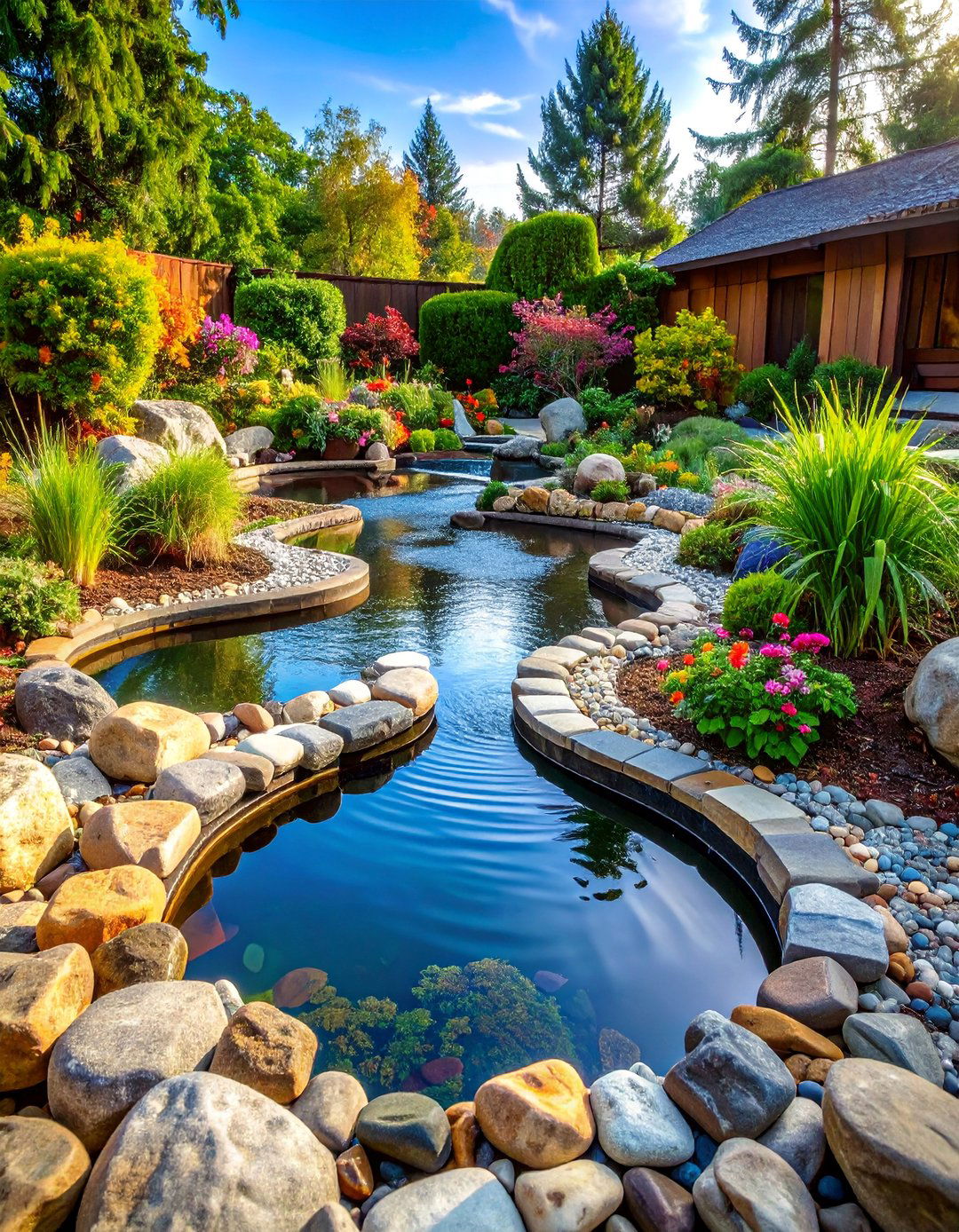
Rock garden rain collection systems integrate water harvesting with landscape features to create sustainable garden irrigation. This design uses natural stone channels and basins to direct rainwater runoff toward planted areas that benefit from additional moisture. French drains incorporate decorative stones while managing excess water during heavy precipitation events. Rain chains and stone basins create visual interest while functional water management serves drought-tolerant plants during dry periods. The system reduces municipal water usage while preventing erosion and managing stormwater runoff effectively. Overflow areas direct excess water to appropriate drainage locations while maintaining landscape aesthetics. This sustainable approach combines environmental responsibility with practical garden management, creating systems that work with natural weather patterns rather than against them. The design provides educational opportunities about water cycles while demonstrating practical applications of sustainable landscape management in residential settings.
24. Rock Garden with Edible Plants

Edible rock gardens combine ornamental stone features with culinary plants that thrive in well-drained, sunny conditions. This design incorporates herbs like thyme, oregano, and sage that naturally grow in rocky Mediterranean environments while providing ingredients for cooking. Alpine strawberries, nasturtiums, and edible flowers add color while supplying fresh ingredients for salads and garnishes. The excellent drainage provided by rock garden construction suits many culinary plants that prefer drier conditions than typical vegetable garden environments. Stone pathways provide access for harvesting while maintaining garden aesthetics throughout the growing season. This functional approach combines beautiful landscape features with practical food production, appealing to gardeners interested in both ornamental and culinary gardening. The design requires consideration of harvest access and plant replacement schedules while maintaining attractive composition throughout changing seasons as plants are harvested and regrown.
25. Rock Garden Wildlife Habitat

Wildlife habitat rock gardens create ecosystems that support local fauna while providing beautiful landscape features for human enjoyment. This design incorporates native plants, water sources, and shelter opportunities that attract birds, beneficial insects, and small mammals to garden areas. Native flowering plants provide nectar sources while producing seeds that feed local bird populations. Rock crevices and stone piles create nesting sites and hibernation areas for beneficial insects and small reptiles. Water features support amphibian populations while providing drinking opportunities for various wildlife species. The design emphasizes native plant communities that evolved with local wildlife, ensuring appropriate food sources and habitat conditions. This ecological approach requires understanding of local ecosystems but creates gardens that function as extensions of natural areas, supporting biodiversity while providing educational opportunities for observing wildlife behavior and seasonal changes in animal populations.
Conclusion:
Rock gardens offer versatile solutions for creating stunning landscapes that combine natural beauty with practical benefits. From traditional alpine designs to contemporary water features, these gardens provide year-round interest with minimal maintenance requirements. Whether incorporating drought-tolerant plants, seasonal color displays, or wildlife habitat features, rock gardens adapt to various climates and design preferences. The combination of stone elements with carefully selected plants creates sustainable landscapes that conserve water while supporting local ecosystems. These 25 ideas demonstrate the creative possibilities available when designing rock gardens that enhance outdoor spaces while reflecting personal style and environmental consciousness.




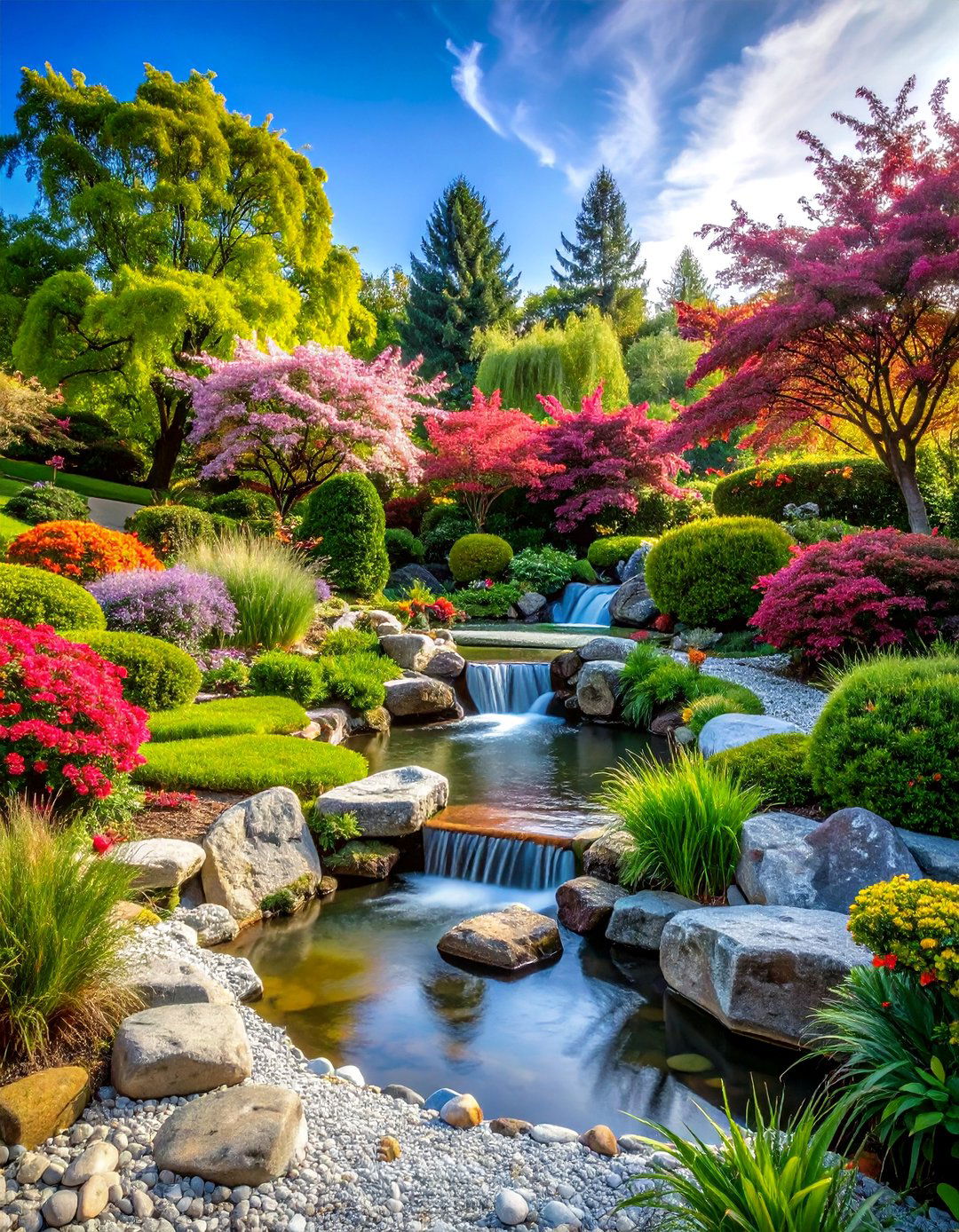
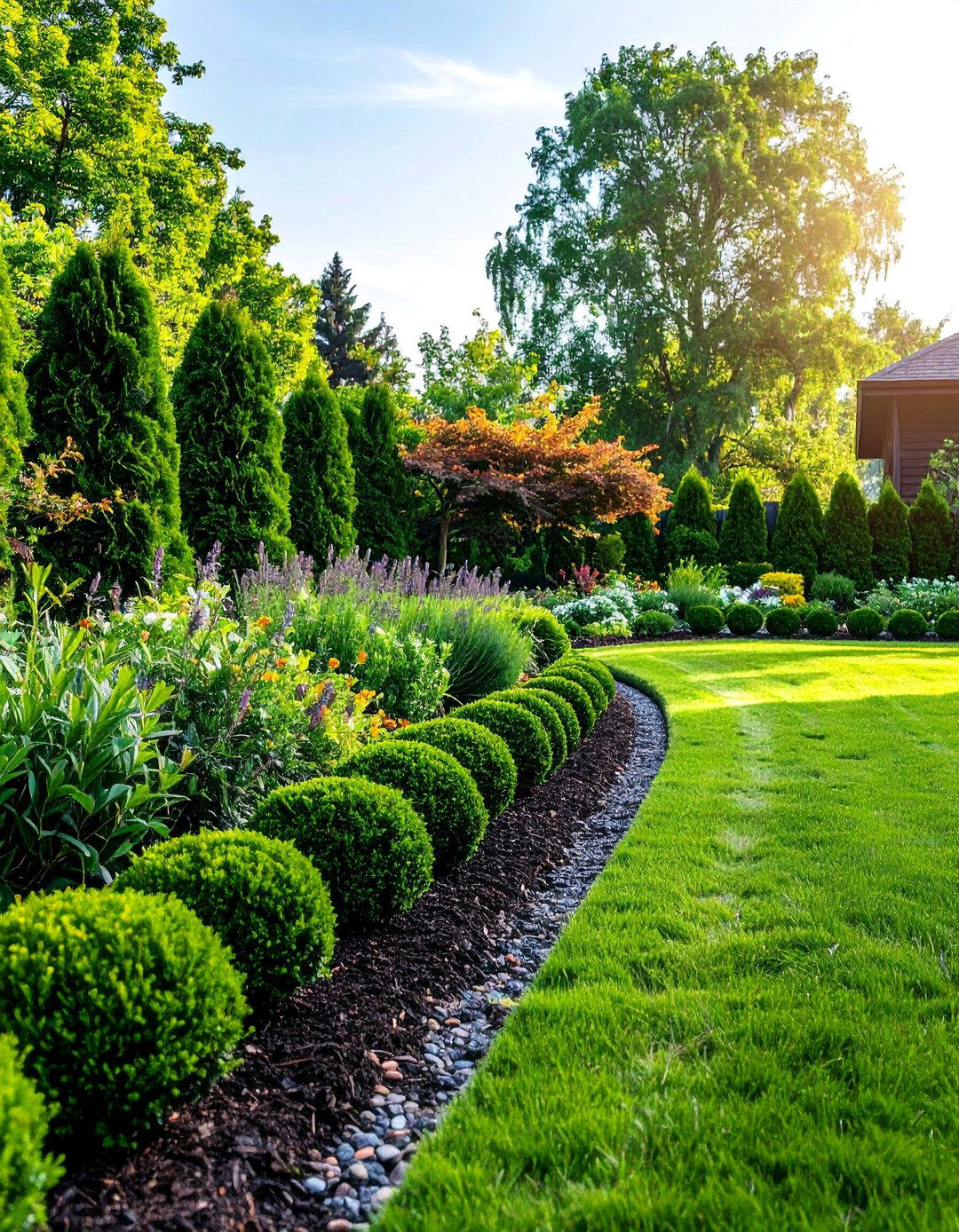
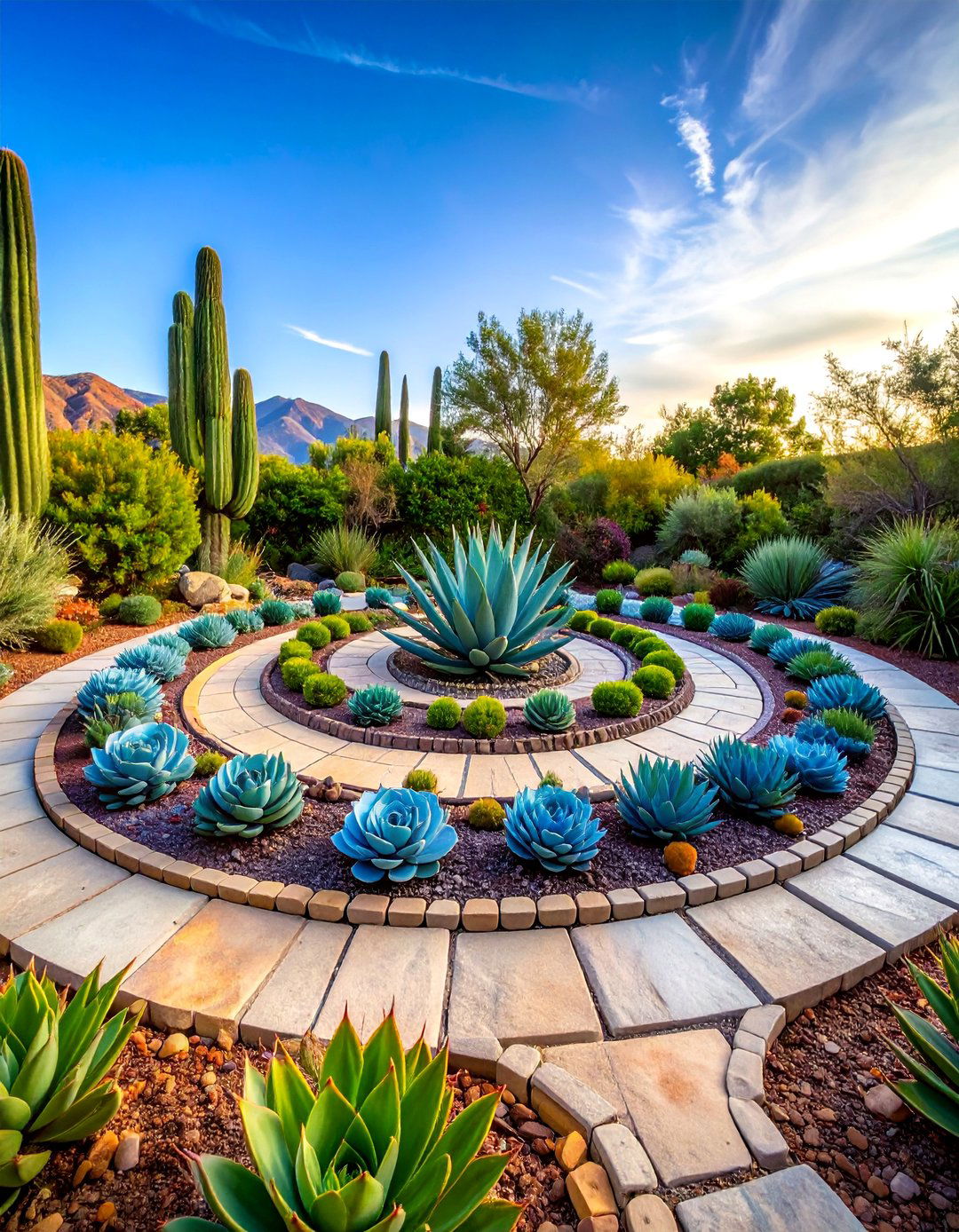

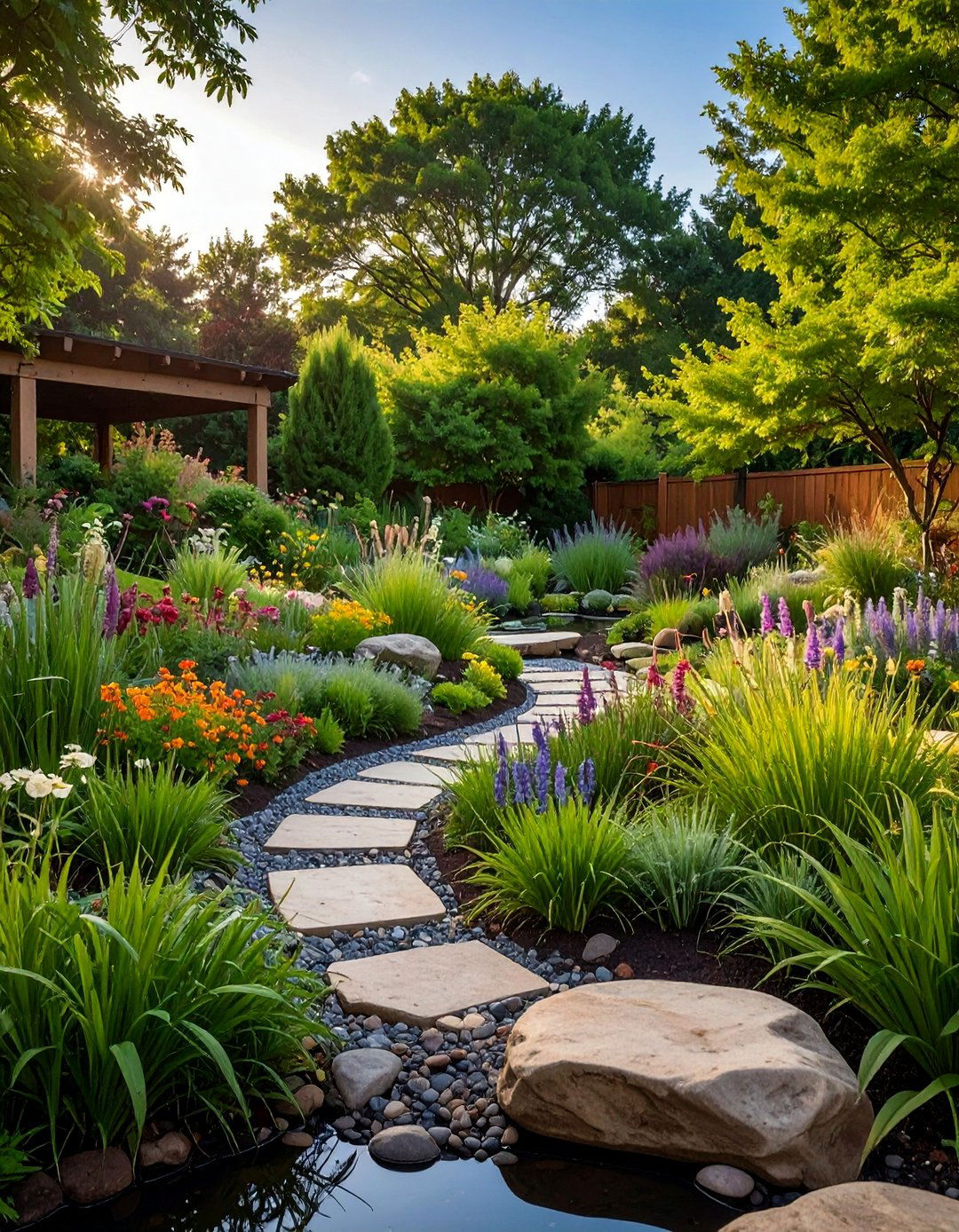
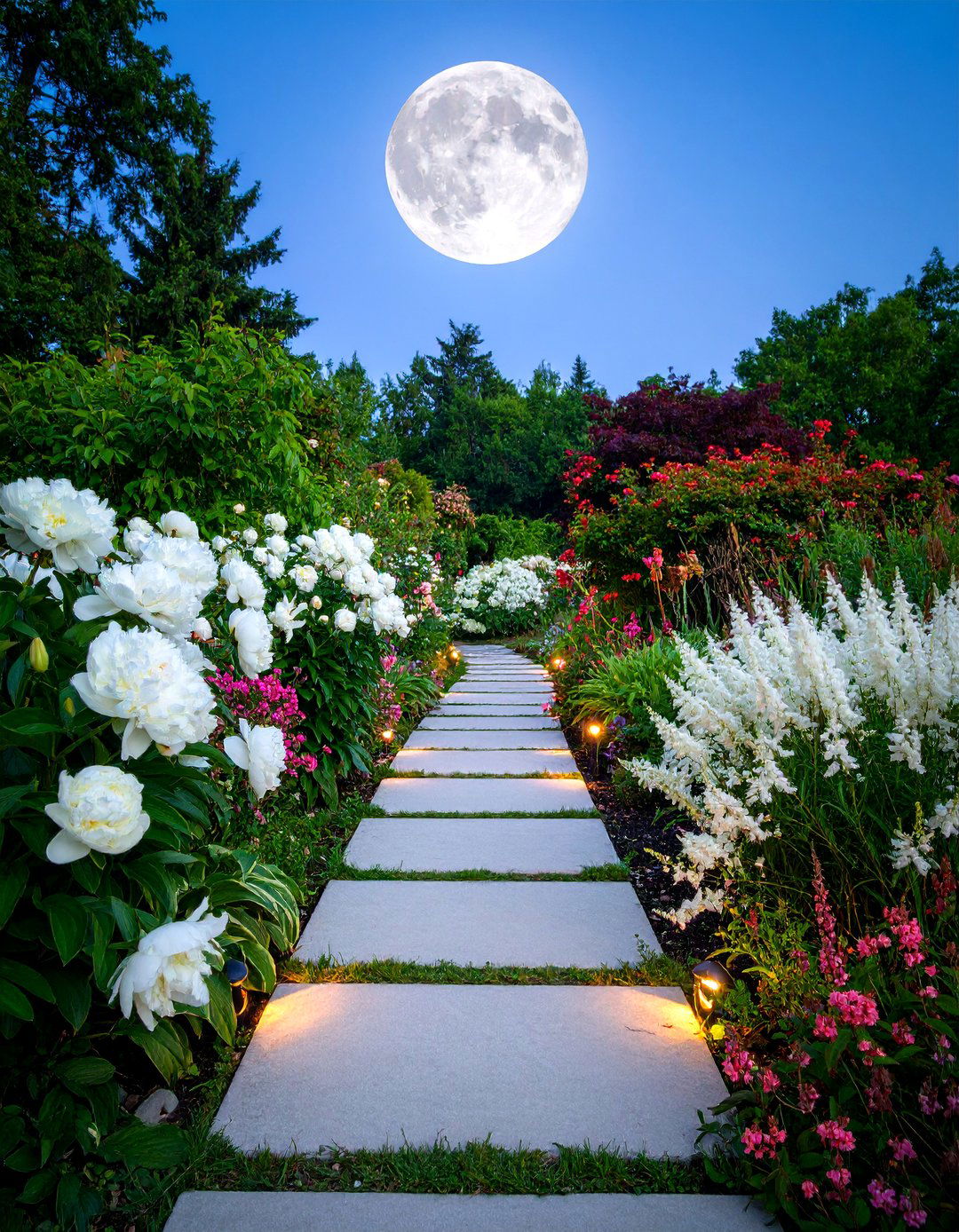


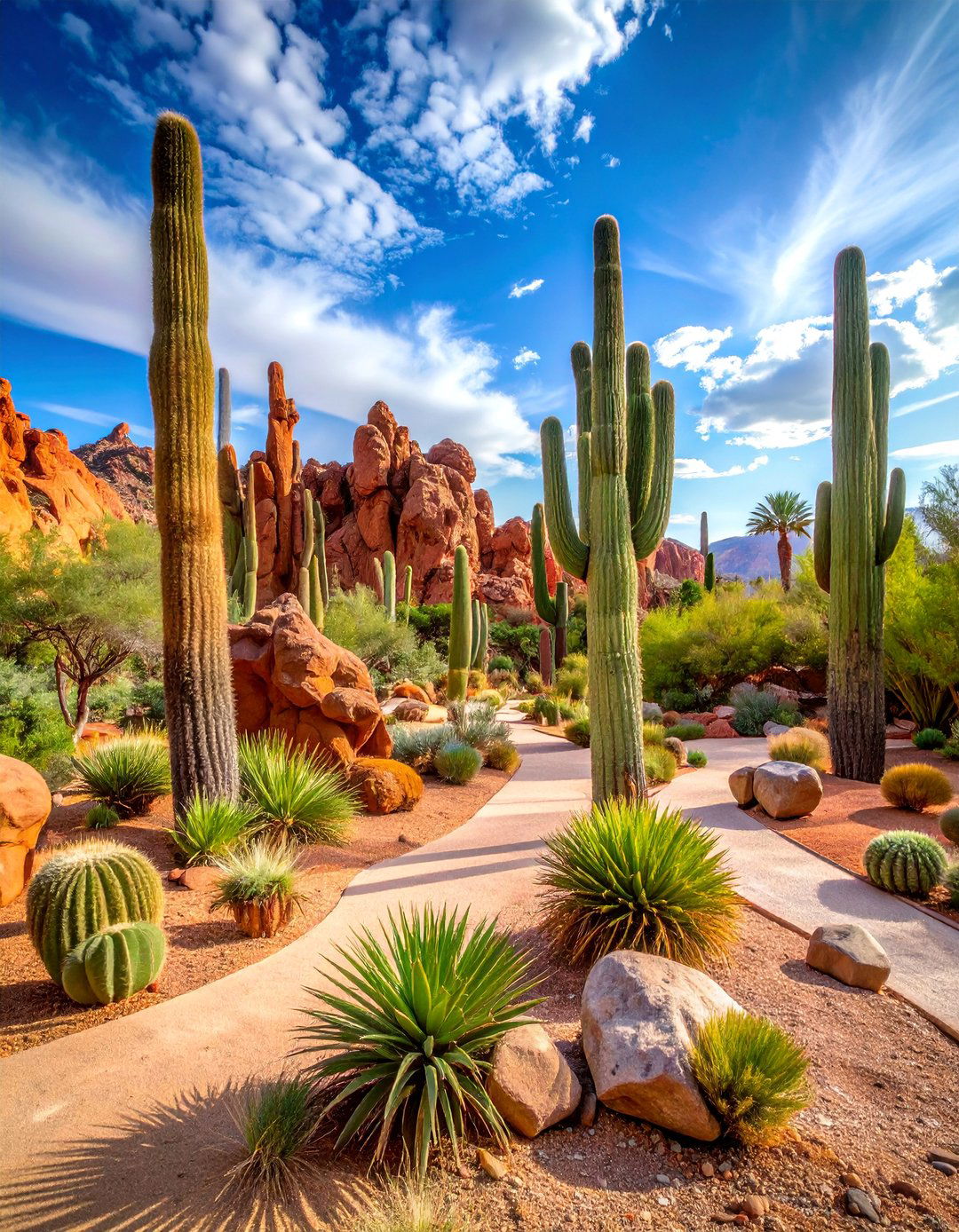

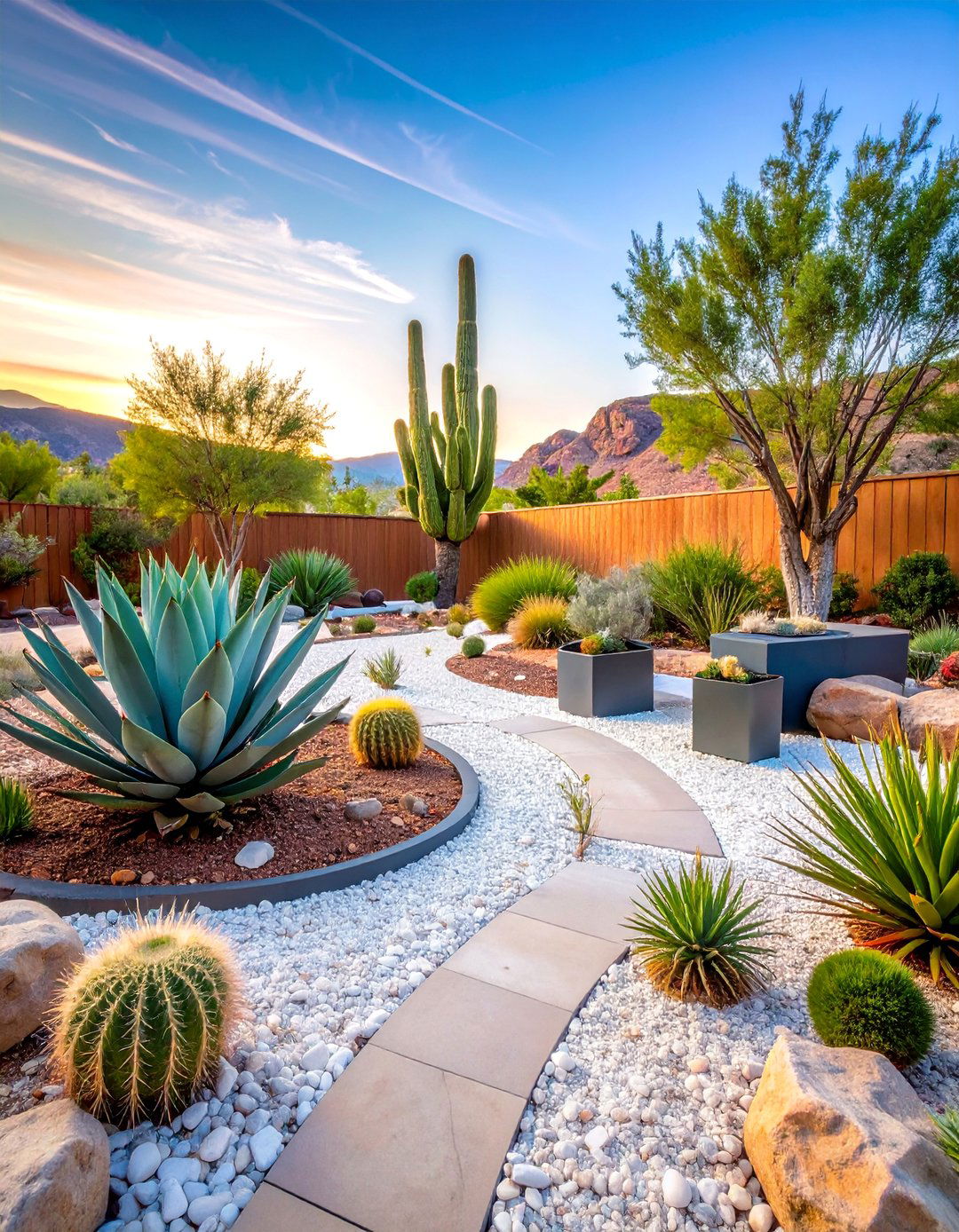
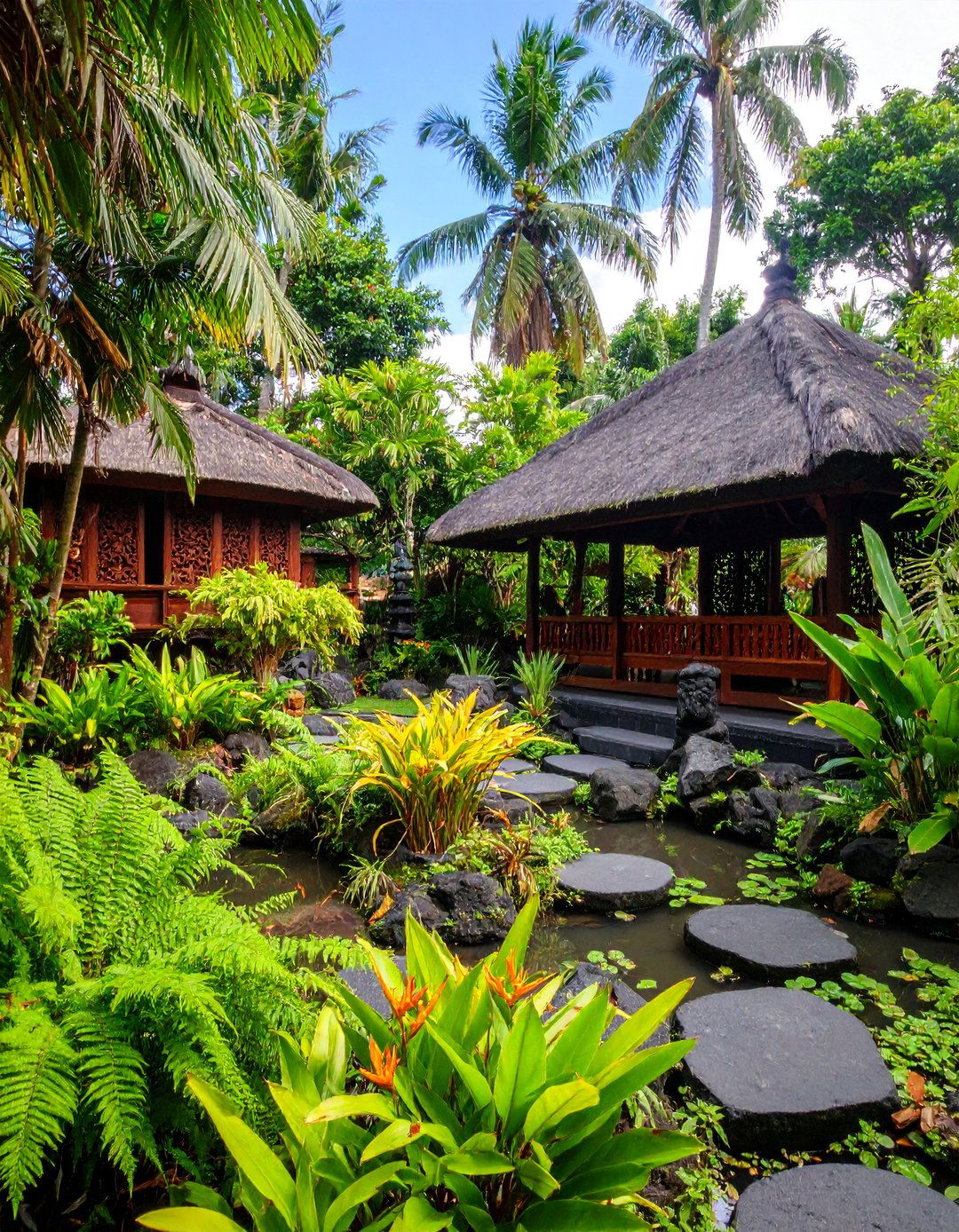

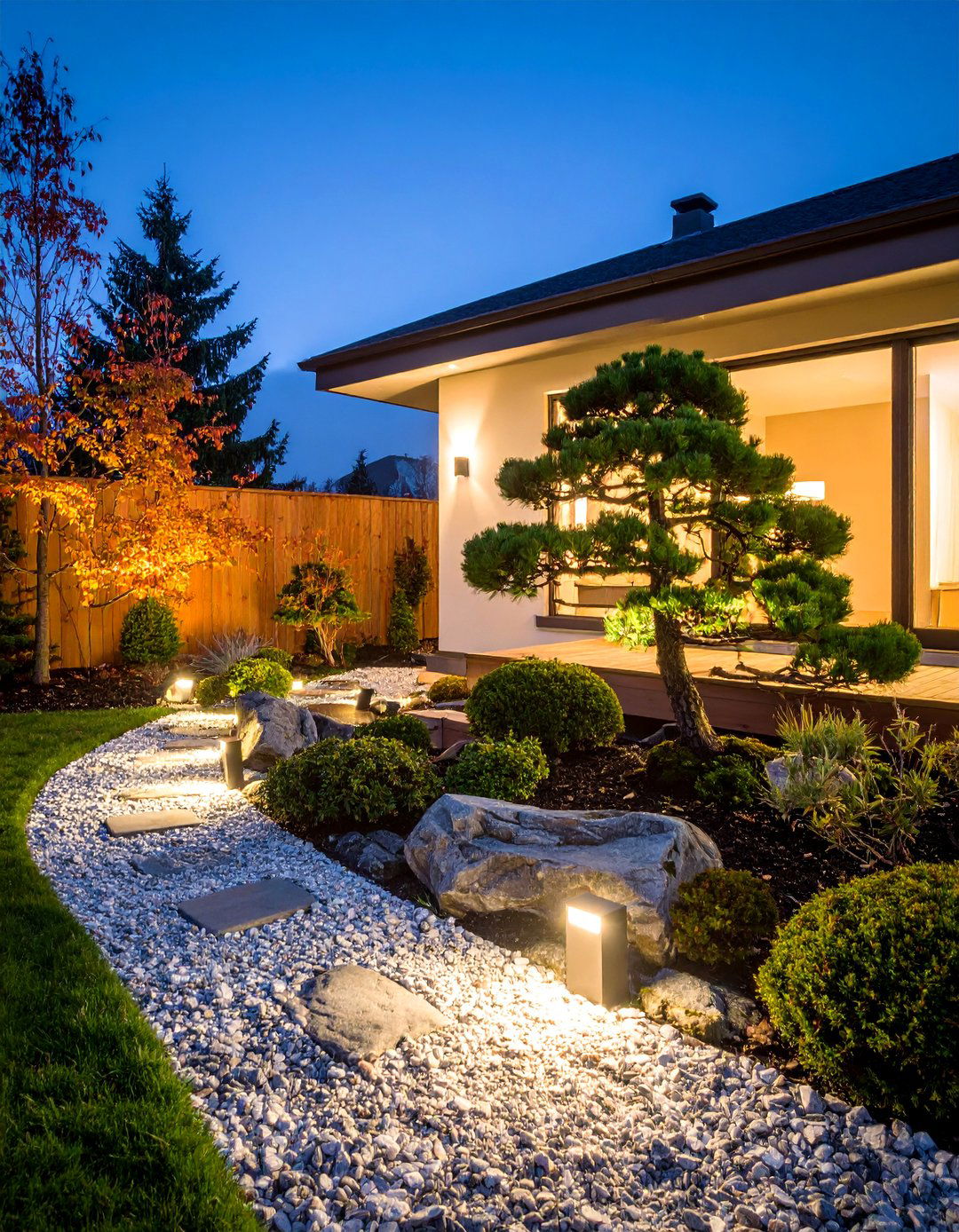
Leave a Reply